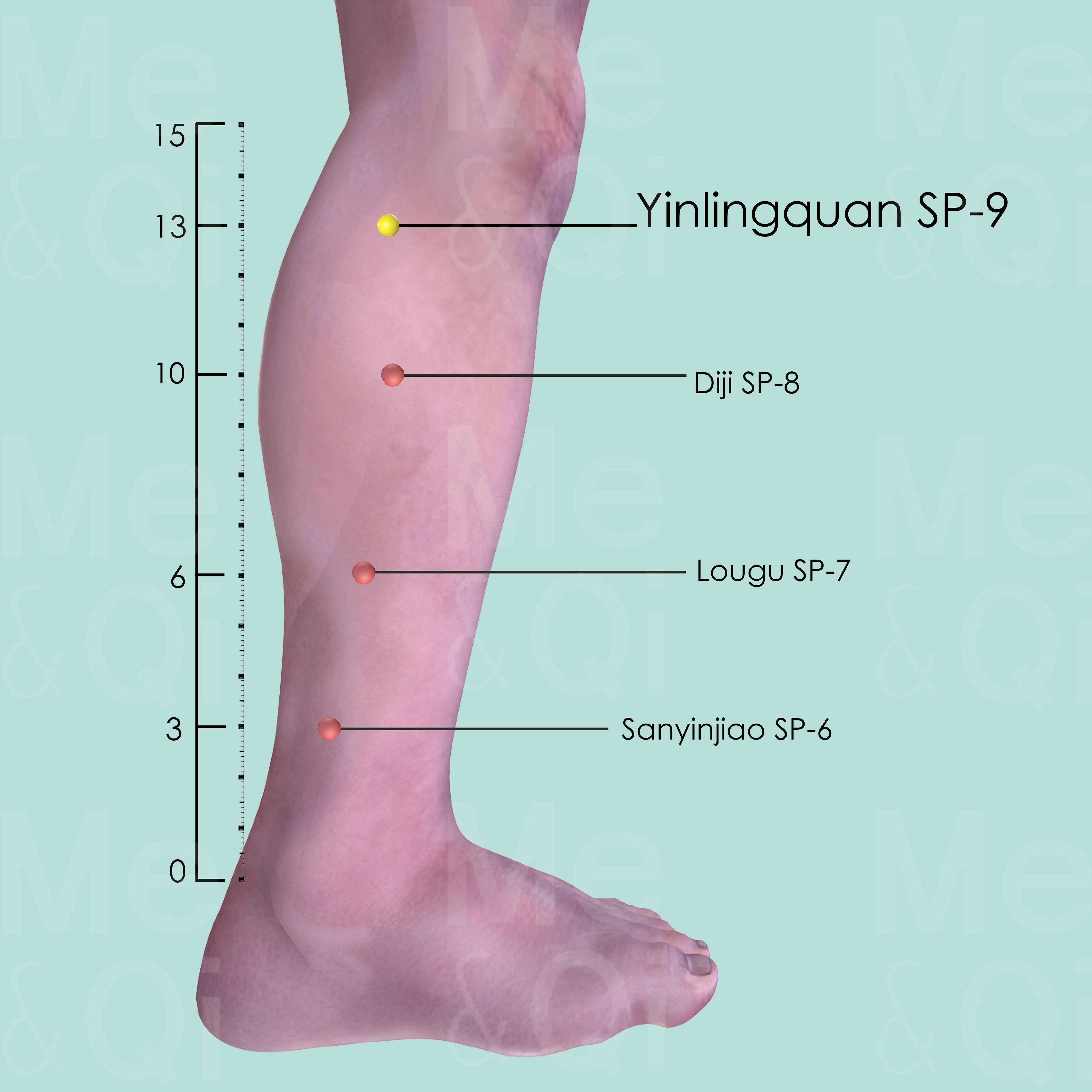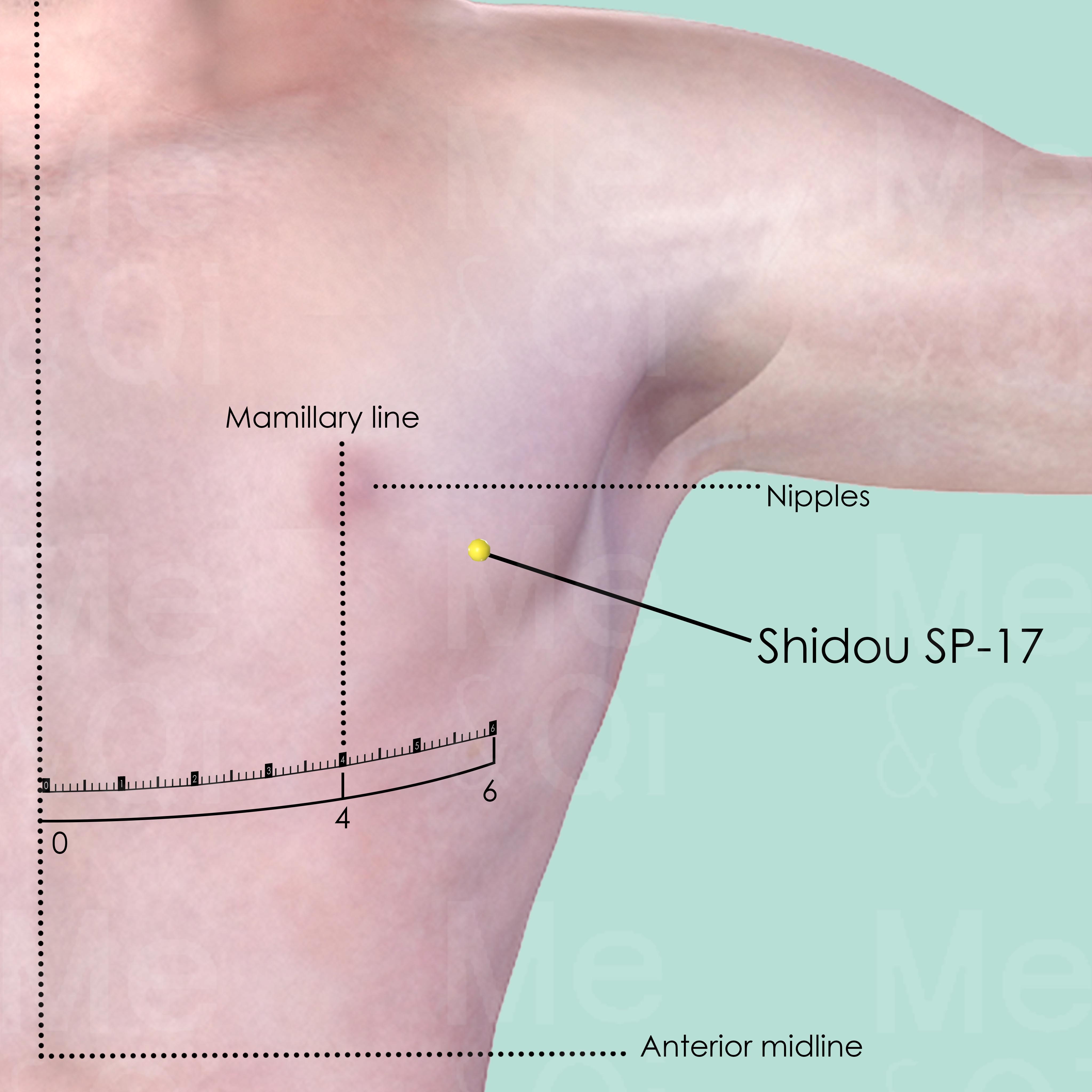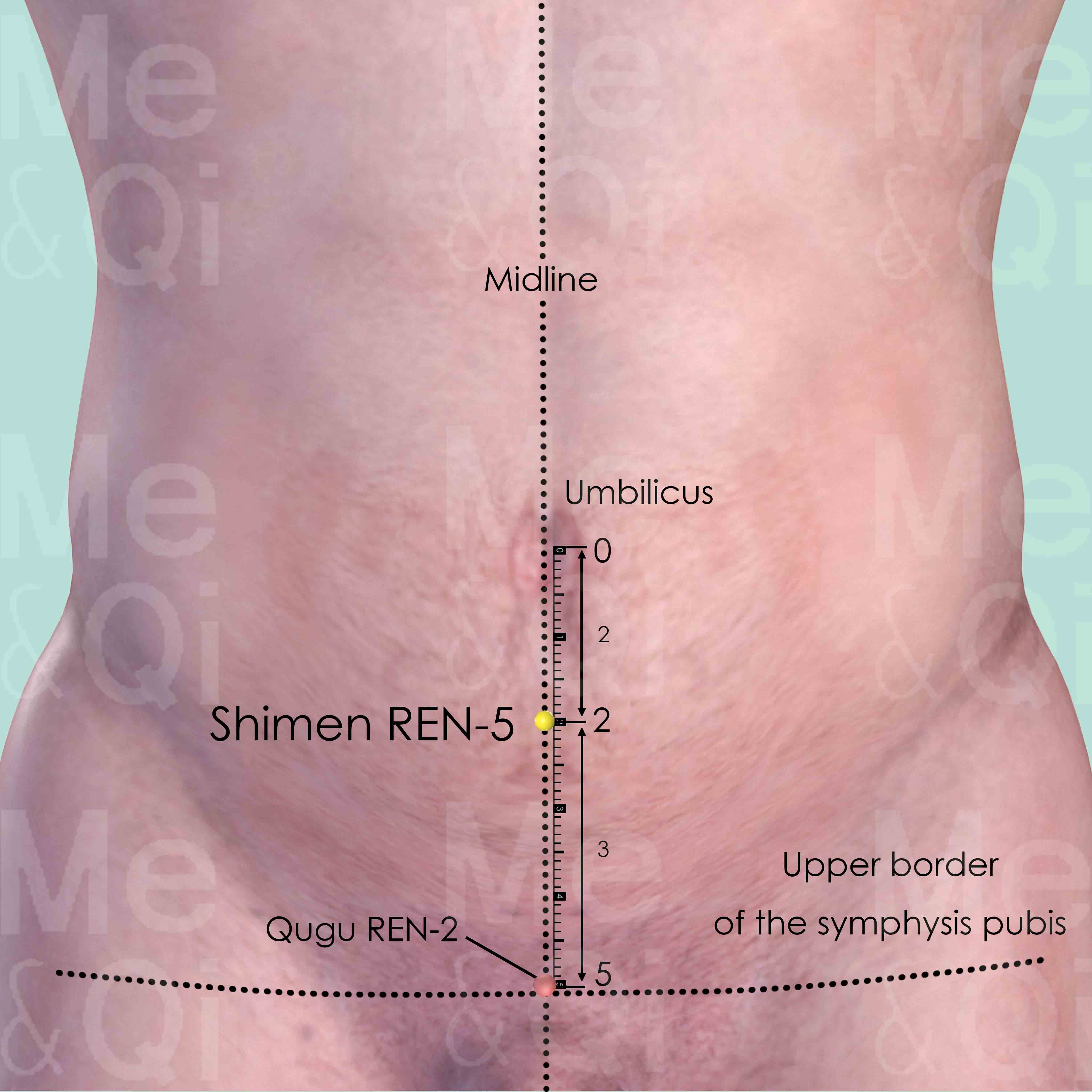Abdominal Edemaaccording to TCM
Symptom families: Abdominal Distension and Fullness, Edema-associated Concerns
Parent symptom: Edema
Did you mean? Abdominal Distention
What is Abdominal Edema?
Abdominal edema is a medical condition characterized by the accumulation of fluid in the abdominal cavity, leading to swelling and distension in the belly area. This symptom can be a sign of various underlying health issues, ranging from liver disease to heart failure.
The edema results from fluid imbalance in the body, often linked to compromised organ function or circulatory issues. It can cause discomfort, heaviness, and may affect mobility. Recognizing and addressing the root cause of abdominal edema is crucial for effective treatment and relief.
How does TCM view Abdominal Edema?
Traditional Chinese Medicine (TCM) approaches abdominal edema with a distinct perspective compared to Western medicine. In TCM, this symptom is seen as an indication of imbalances in the body's Qi (vital energy) and Body Fluids.
It emphasizes identifying specific patterns of disharmony that lead to fluid accumulation. TCM views abdominal edema as a manifestation of deeper systemic issues rather than an isolated condition, focusing on restoring balance and harmony to the body's energy systems for treatment.
Root Causes of Abdominal Edema in TCM
In TCM, abdominal edema is often associated with specific patterns of imbalance, notably Phlegm and Dampness accumulation. One primary cause is the dysfunction in the body’s ability to process and distribute fluids, leading to their abnormal accumulation in the abdominal area.
This condition is closely linked with the health of the Spleen and Kidney systems, which in TCM are crucial for fluid metabolism. Symptoms such as swelling of the abdomen, legs, or face are indicative of these imbalances. Understanding these underlying patterns is key to addressing abdominal edema effectively in TCM.
Explore below more details about what might cause Abdominal edema according to TCM.
- By Syndrome
- Phlegm
- Dampness
Phlegm
In TCM "Phlegm" as a pattern of disharmony is a complex concept that extends beyond the physical manifestation of mucus. It represents a pathological factor that can disrupt the flow of Qi (vital energy) and blood, leading to various health issues. Phlegm in TCM is seen as a sticky, turbid substance arising from the body's inability to metabolize fluids properly, often due to a dysfunction of the spleen. It's not only associated with respiratory problems like cough and congestion but also with systemic issues. Symptoms can include a feeling of heaviness, mental cloudiness, dizziness, and in some cases, the formation of lumps or masses. Phlegm can even be "invisible," contributing to emotional disturbances like depression or stress. ... see more
Phlegm Patterns That Can Lead to Abdominal Edema
| Pattern Name | Relevant Symptoms | Relevant Formulas |
|---|---|---|
| Oedema | Oedema of abdomen, Abdominal edema, Ankle edema, Facial edema, Foot edema, Oedema of hands, Leg edema, Ocular swelling, Abdominal distention... see more | Wu Ling San | Fang Ji Huang Qi Tang | Ping Wei San | Wu Pi Yin | Ling Gui Zhu Gan Tang | Zhen Wu Tang | Shen Qi Wan | Yu Gong San | Zhou Che Wan |
Dampness
"Dampness" in TCM is a concept that describes a pattern of disharmony where the body accumulates excess moisture. Imagine the heavy, sticky feeling you get on a very humid day; that's similar to what dampness feels like internally. It can manifest as a sense of heaviness, bloating, sluggishness, or even a foggy mind. This condition is often thought to arise from environmental factors like living in a damp place, dietary habits that promote moisture in the body, or internal imbalances that hinder the body's ability to process fluids properly. In TCM, dampness can obstruct the normal flow of energy and fluids in the body, leading to various symptoms.... see more
Dampness Patterns That Can Lead to Abdominal Edema
| Pattern Name | Relevant Symptoms | Relevant Formulas |
|---|---|---|
| Oedema | Oedema of abdomen, Abdominal edema, Ankle edema, Facial edema, Foot edema, Oedema of hands, Leg edema, Ocular swelling, Abdominal distention... see more | Wu Ling San | Fang Ji Huang Qi Tang | Ping Wei San | Wu Pi Yin | Ling Gui Zhu Gan Tang | Zhen Wu Tang | Shen Qi Wan | Yu Gong San | Zhou Che Wan |
TCM Herbal Formulas for Abdominal Edema
TCM employs various formulas and herbs to treat abdominal edema, focusing on the identified pattern of disharmony. For conditions related to Phlegm and Dampness, a formula like Wu Ling San, containing Water plantain (Ze Xie), is commonly used.
This formula works to promote urination and leach out Dampness, helping to reduce fluid accumulation and alleviate swelling. The choice of treatment in TCM is highly personalized, aimed at correcting the specific imbalances causing the edema, thereby providing a tailored approach to each individual’s condition.
Explore below some TCM herbal formulas used to address abdominal edema, organized by cause and by formula type.
- By Cause
- By Formula Type
- Phlegm
- Dampness
- Formulas that promote urination and leach out dampness
- Formulas that warm and transform water and dampness
- Formulas that drive out excess water
- Formulas that transform dampness and harmonize stomach
- Formulas that warm yang and tonify
Top Formula for Phlegm:
Wu Ling San
Suitable for Phlegm patterns that may cause abdominal edema, such as Oedema
Learn moreAll Formulas Recommended for Abdominal Edema Caused by Phlegm
| Formula | Patterns Suitable For |
|---|---|
| Wu Ling San | Oedema |
| Fang Ji Huang Qi Tang | Oedema |
| Ping Wei San | Oedema |
| Wu Pi Yin | Oedema |
| Ling Gui Zhu Gan Tang | Oedema |
| Zhen Wu Tang | Oedema |
| Shen Qi Wan | Oedema |
| Yu Gong San | Oedema |
| Zhou Che Wan | Oedema |
Top Formula for Dampness:
Wu Ling San
Suitable for Dampness patterns that may cause abdominal edema, such as Oedema
Learn moreAll Formulas Recommended for Abdominal Edema Caused by Dampness
| Formula | Patterns Suitable For |
|---|---|
| Wu Ling San | Oedema |
| Fang Ji Huang Qi Tang | Oedema |
| Ping Wei San | Oedema |
| Wu Pi Yin | Oedema |
| Ling Gui Zhu Gan Tang | Oedema |
| Zhen Wu Tang | Oedema |
| Shen Qi Wan | Oedema |
| Yu Gong San | Oedema |
| Zhou Che Wan | Oedema |
Formulas that promote urination and leach out Dampness
These formulas are suitable for some abdominal edema-causing patterns like Oedema.
One such formula is Wu Ling San, with water plantain as a key herb.
Other formulas of this category are listed in the table below.
All "formulas that promote urination and leach out dampness" recommended for abdominal edema
| Formula | Patterns Suitable For (if applicable) |
|---|---|
| Wu Ling San | Oedema |
| Fang Ji Huang Qi Tang | Oedema |
| Wu Pi Yin | Oedema |
Formulas that warm and transform water and Dampness
These formulas are suitable for some abdominal edema-causing patterns like Oedema.
One such formula is Ling Gui Zhu Gan Tang, with poria-cocos mushroom as a key herb.
Other formulas of this category are listed in the table below.
All "formulas that warm and transform water and dampness" recommended for abdominal edema
| Formula | Patterns Suitable For (if applicable) |
|---|---|
| Ling Gui Zhu Gan Tang | Oedema |
| Zhen Wu Tang | Oedema |
Formulas that drive out excess water
These formulas are suitable for some abdominal edema-causing patterns like Oedema.
One such formula is Yu Gong San, with morning glory seeds as a key herb.
Other formulas of this category are listed in the table below.
All "formulas that drive out excess water" recommended for abdominal edema
| Formula | Patterns Suitable For (if applicable) |
|---|---|
| Yu Gong San | Oedema |
| Zhou Che Wan | Oedema |
Formulas that transform Dampness and harmonize Stomach
These formulas are suitable for some abdominal edema-causing patterns like Oedema.
One such formula is Ping Wei San, with black atractylodes rhizome as a key herb.
Formulas that warm Yang and tonify
These formulas are suitable for some abdominal edema-causing patterns like Oedema.
One such formula is Shen Qi Wan, with prepared aconite as a key herb.
Acupoints for Abdominal Edema
TCM also incorporates acupuncture as a part of its treatment for abdominal edema. Specific acupoints are targeted to address the underlying imbalances. Points such as Shidou SP-17 and Yinlingquan SP-9 in the Spleen Channel are significant for resolving Food Stagnation and regulating the Spleen, while also addressing Dampness.
Additionally, Shimen REN-5 in the Directing Vessel is utilized for its effectiveness in opening water passages and regulating Qi and Blood in the Lower Burner. These acupoints are strategically chosen to enhance the body’s fluid metabolism and strengthen Qi, contributing to the reduction of abdominal edema.
Explore below some acupoints used to address abdominal edema, organized by meridian.
- By Meridian
- Spleen Channel
- Directing Vessel

Yinlingquan SP-9
On the lower border of the medial condyle of the tibia, in the depression between the posterior border of the tibia and gastrocnemius muscle.

Shidou SP-17
6 cun lateral to the anterior midline, 2 cun lateral to the mamillary line, in the 5th intercostal space.

